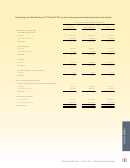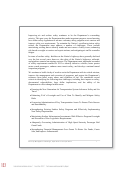Performance And Accountability Report - Fiscal Year 2013 - Federal Aviation Administration - U.s. Department Of Transportation Page 89
ADVERTISEMENT
 1
1  2
2  3
3  4
4  5
5  6
6  7
7  8
8  9
9  10
10  11
11  12
12  13
13  14
14  15
15  16
16  17
17  18
18  19
19  20
20  21
21  22
22  23
23  24
24  25
25  26
26  27
27  28
28  29
29  30
30  31
31  32
32  33
33  34
34  35
35  36
36  37
37  38
38  39
39  40
40  41
41  42
42  43
43  44
44  45
45  46
46  47
47  48
48  49
49  50
50  51
51  52
52  53
53  54
54  55
55  56
56  57
57  58
58  59
59  60
60  61
61  62
62  63
63  64
64  65
65  66
66  67
67  68
68  69
69  70
70  71
71  72
72  73
73  74
74  75
75  76
76  77
77  78
78  79
79  80
80  81
81  82
82  83
83  84
84  85
85  86
86  87
87  88
88  89
89  90
90  91
91  92
92  93
93  94
94  95
95  96
96  97
97  98
98  99
99  100
100  101
101  102
102  103
103  104
104  105
105  106
106  107
107  108
108  109
109  110
110  111
111  112
112  113
113  114
114  115
115  116
116  117
117  118
118  119
119  120
120  121
121  122
122  123
123  124
124  125
125  126
126  127
127  128
128  129
129  130
130  131
131  132
132  133
133  134
134  135
135  136
136  137
137  138
138  139
139  140
140  141
141  142
142  143
143  144
144  145
145  146
146  147
147  148
148  149
149  150
150 NOTES TO THE FINANCIAL STATEMENTS
NOTE 1. Summary of Significant Accounting Policies
A. Basis of Presentation
customer needs, economic conditions, and environmental
concerns.
The financial statements have been prepared to report the
financial position, net cost of operations, changes in net
Congress annually enacts appropriations to permit the FAA
position, and status and availability of budgetary resources of
to incur obligations for specified purposes. In FY 2013 and
the Federal Aviation Administration (the FAA). The statements
2012, the FAA was accountable for amounts made available
are a requirement of the Chief Financial Officers Act of 1990,
in appropriations laws from the Airport and Airway Trust Fund
and the Government Management Reform Act of 1994. They
(AATF), Revolving Funds, a Special Fund, and General Fund
have been prepared from, and are fully supported by, the books
appropriations. The FAA recognizes budgetary resources as
and records of the FAA in accordance with (1) the hierarchy of
assets when cash (funds held by the U.S. Treasury) is made
accounting principles generally accepted in the United States of
available through Department of Treasury General Fund warrants,
America and standards approved by the principals of the Federal
and transfers from the AATF are apportioned by OMB.
Accounting Standards Advisory Board (FASAB), (2) Office of
The FAA has contract authority which allows the agency to enter
Management and Budget (OMB) Circular No. A-136, Financial
Reporting Requirements, and (3) Department of Transportation
into contracts prior to receiving an appropriation for the payment
of obligations. A subsequently enacted appropriation provides
(DOT) and the FAA significant accounting policies, the latter of
which are summarized in this note. These statements, with the
funding to liquidate the obligations. Current contract authority is
exception of the Statement of Budgetary Resources, are different
provided for the Airport Improvement Program (AIP) program and
funded by appropriations from the AATF.
from financial management reports, which are also prepared
pursuant to OMB directives that are used to monitor and control
The FAA also has spending authority from offsetting collections
the FAA’s use of budgetary resources. The statements are
primarily from a non-expenditure transfer from the AATF for
subjected to audit, as required by OMB Bulletin No. 14-02, Audit
Operations funding. The balance of the spending authority from
Requirements for Federal Financial Statements.
offsetting collections comes from other federal agencies to fund
Notes 4 and 8 include the necessary information to present
reimbursable activities performed by the FAA on their behalf.
“other assets” and “other liabilities” as defined by OMB Circular
The FAA reporting entity is comprised of the following major
No. A-136. This presentation is used to support the preparation
funds:
of the consolidated financial statements of the U.S. Government.
Airport and Airway Trust Fund (AATF). The AATF, a fund
¢
Unless specified otherwise, all dollar amounts are presented in
from dedicated collections (in prior years referred to as
thousands.
an “earmarked fund”), is funded by excise taxes that the
Internal Revenue Service (IRS) collects from airway system
B. Appropriations and Reporting Entity
users. As presented in Note 3, these receipts are held for
investment and unavailable until appropriated by the U.S.
The FAA, which was created in 1958, is a component of the DOT,
Congress. Once appropriated for use, the FAA transfers AATF
a cabinet-level agency of the Executive Branch of the United
receipts necessary to meet cash disbursement needs to
States Government. The FAA’s mission is to provide a safe,
several other funds, from which expenditures are made. The
secure, and efficient global aerospace system that contributes to
AATF fully finances the following additional FAA funds:
national security and the promotion of United States aerospace
Grants-in-Aid to Airports-AATF. As authorized, grants
safety. As the leading authority in the international aerospace
¢
are awarded with Grants-in-Aid to Airports funding
community, the FAA is responsive to the dynamic nature of
and used for planning and development to maintain a
87
|
|
Federal Aviation Administration
Fiscal Year 2013
Performance and Accountability Report
ADVERTISEMENT
0 votes
Related Articles
Related forms
Related Categories
Parent category: Business









